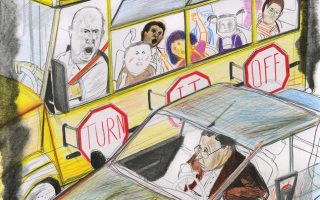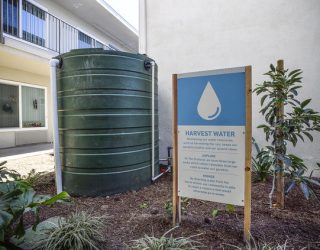Credit: Sam Chivers for NRDC
Credit: Sam Chivers for NRDC
The Issue:
People across the United States are already suffering from the impacts of the climate crisis. These harms—including physical and mental health impacts, housing and income loss from hazards such as extreme heat, repeated flooding and sea level rise, wildfire, and drought—are falling heavily on communities of color and low-income communities. Scientific reports show that we have a very narrow window of time to act: To avoid the most dangerous repercussions we must limit warming to 1.5 degrees Celsius (2.7 degrees Fahrenheit) by the end of the century. The good news? The solutions to build a more just and equitable future for all already exist — we just need to demand that they be implemented.
The Game Design Prompt:
We need a comprehensive plan that addresses the impacts of the climate crisis by strengthening our communities’ resilience to climate extremes and reducing carbon emissions. Solutions like adaptation, green infrastructure, public transportation, energy efficiency and clean energy are all promising and within reach. Create a game that shows how we can improve our homes, schools, and communities to be more sustainable and improve people’s health.
2020 tied with 2016 as the hottest year on record, with 2019 coming in second — in fact, 19 of the 20 warmest years ever recorded have occurred in the past two decades.
According to the World Health Organization, “climate change is expected to cause approximately 250,000 additional deaths per year” between 2030 and 2050.
With cities consuming more than two-thirds of the world’s energy and accounting for more than 70 percent of global CO2 emissions (primarily through the high-emitting sectors of transportation and buildings and energy), we cannot ignore the role of cities in climate solutions.
Transportation, including ships, planes, trains, and motor vehicles, contributes 29 percent of all U.S. greenhouse gas emissions, making it the country’s single-biggest source of such pollution.
Buildings are the single-largest user of energy in the United States, accounting for 50 – 75 percent of total energy consumption in a city. The good news is that there are easy fixes to make buildings more sustainable through updates to building heating, cooking, and power, and replacing gas appliances with cleaner alternatives that use electricity!
An overview of global warming, its causes, effects, and what’s being done about it.

Mining, drilling, and burning dirty energy are harming the environment and our health. Here’s everything you need to know about fossil fuels, and why we need to embrace a clean energy future.
How You Can Help Fight Climate Change
Healing the planet starts in your garage, in your kitchen, and at your dining room table. Here are some easy, concrete ways you can make a difference.
No demolition required. A few small tweaks to each room could dramatically shrink your carbon footprint.


From weather-stripping windows to using the right light bulbs, these smart and simple tips can help keep your family cozy and your energy costs low.
Modern electric heat pumps are a climate-proof technology that can help us control the temperature in our homes

Eight ways to help your district’s students and parents be better environmental citizens.

ActionBecause of their massive environmental footprints, urban areas can play a huge role in curbing climate change. Ask these five questions of local leaders to see if your city is up to snuff.


Wind and solar are powering a clean energy revolution. Here’s what you need to know about renewables and how you can help make an impact at home.
Here’s what you need to know about energy efficiency and how you can help save the environment—and money—at the same time.


How the Transition to Efficient All-Electric Buildings Will Help the United States Meet Its Climate Goals.
By relying on plants, soil, and natural systems to manage rainfall runoff, green infrastructure tackles urban water woes and boosts climate resilience.


Everything you need to know to switch to an electric car.
To meet U.S. climate goals, we need to cut carbon emissions by half, at least, by 2030 to avert the most dangerous consequences of climate change. The resources below outline the actions the United States needs to take to get there. These key areas of impact can be applied to any city in the U.S and can be used as inspiration for game design.
Each policy considered for reducing emissions is also an opportunity to support good jobs and improve equity:
America must act— and not just the federal government, but cities and states, small and big business, working communities. Together, we can seize the opportunity to drive prosperity, create jobs, and build the clean energy economy of tomorrow.

The most impactful projects for all 50 states—and the planet.
Each city has identified top areas of impact for reducing carbon emissions in their city climate action plans. Climate action plans for each of the Challenge Cities are provided below so that students can learn about the major themes their city is focusing on as part of their climate strategy and have the option to creatively integrate these actions into their games.
Check out pages 6-9 for thematic strategies!
Check out page 18 for thematic strategies!
Check out pages 20-22, 36, 73-76 for thematic strategies!
© Copyright Games for Change 2025